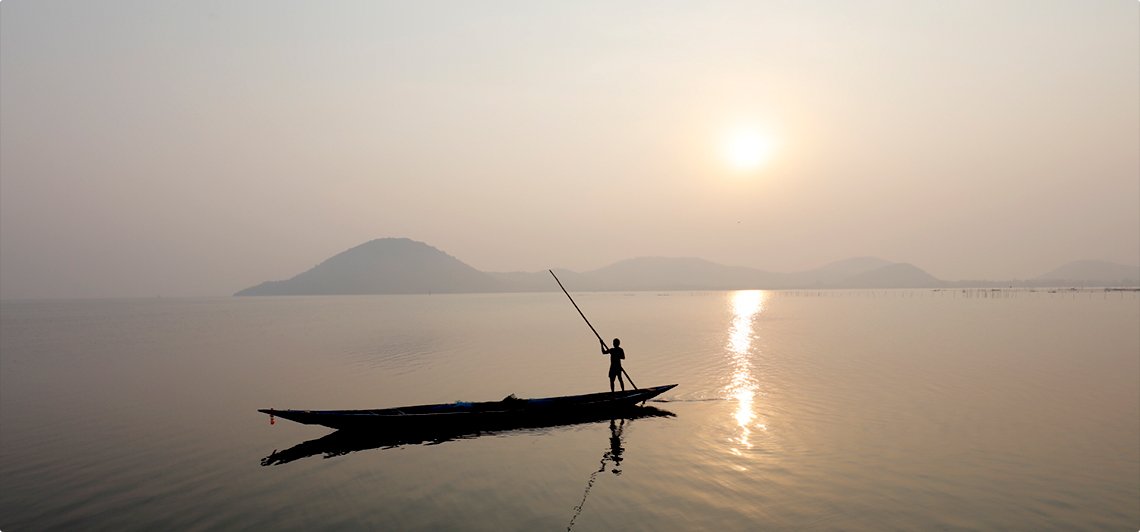The spiritual renaissance brought about by Adi Shankaracharya in the 8th century CE remains one of the most profound movements in Indian philosophical thought. At a time when sectarian practices, ritualism, and fragmented spiritual traditions threatened the essence of Vedic wisdom, Shankaracharya set forth on a mission to revive, unify, and propagate Sanatana Dharma with a deep focus on Advaita Vedanta, the philosophy of non-dualism.
To institutionalize this spiritual mission, he established four cardinal mathas (monastic centers) in the four corners of the Indian subcontinent. These mathas—Sringeri, Dwarka, Puri, and Jyotirmath (Joshimath)—became centers of learning, spiritual discipline, and philosophical debate. Their purpose was to ensure the continuity of Vedic knowledge, provide spiritual leadership, and guide seekers on the path of self-realization.
Advaita Vedanta: The Philosophical Foundation
Advaita Vedanta emphasizes the oneness of existence, teaching that the individual self (Atman) and the universal consciousness (Brahman) are ultimately one and the same. The perceived duality of the world is considered an illusion (Maya), and liberation (Moksha) is achieved through self-knowledge and realization of this truth.
The mathas were therefore not just centers of worship but became hubs for deep intellectual inquiry, scriptural study, meditation, and the cultivation of spiritual awareness.
1. Sringeri Sharada Peetham (South)
- Location: Sringeri, Karnataka
- Vedic Association: Yajurveda
- Deity: Goddess Sharada (Goddess of learning)
Founded by Adi Shankaracharya on the banks of the Tunga River, Sringeri is considered the southern seat of Advaita Vedanta. Shankaracharya selected this serene location, surrounded by mountains and forests, as an ideal center for learning and contemplation.
The matha became a beacon for scholars, attracting students and spiritual aspirants from across India. It is renowned for its Vedic schools, where rigorous training in scripture, philosophy, and meditation continues to this day.
The Jagadguru of Sringeri has played a pivotal role in defending the Vedas and scriptures, especially during times when other schools of thought sought to overshadow the tradition.
2. Dwaraka Sharada Peetham (West)
- Location: Dwaraka, Gujarat
- Vedic Association: Sama Veda
- Deity: Lord Krishna, Goddess Sharada
Located in the coastal town of Dwaraka, the western seat of the Advaita tradition emphasizes both spiritual wisdom and service to society. The Sama Veda, known for its melodic chants, symbolizes the refinement of knowledge and inner harmony.
Dwaraka’s matha is associated with teachings on devotion and the practice of integrating wisdom with everyday life. It also bridges spiritual practices with societal welfare, supporting pilgrimages, community activities, and education.
3. Govardhan Peeth (Puri) – East
- Location: Puri, Odisha
- Vedic Association: Rigveda
- Deity: Lord Jagannath
The Govardhan Matha in Puri was established by Shankaracharya to serve as the eastern gateway of spiritual learning. Aligned with the Rigveda, it connects seekers to foundational texts of hymns, spiritual invocation, and cosmic understanding.
The matha’s location near the Jagannath Temple, one of the holiest pilgrimage sites, allowed for the seamless fusion of Advaita philosophy with temple rituals, worship traditions, and cultural heritage.
The Sankaracharya of Puri remains one of the most revered spiritual authorities in Odisha, guiding seekers and preserving the sanctity of Vedic teachings amidst the flow of devotional practices.
4. Jyotirmath (Joshimath) – North
- Location: Joshimath, Uttarakhand
- Vedic Association: Atharvaveda
- Deity: Lord Narayana, Adi Shankaracharya’s spiritual symbol
Perched in the Himalayas, the northern matha serves as the spiritual fort for seekers pursuing austere practices and meditation. The Atharvaveda, known for its healing mantras and metaphysical knowledge, represents the transformative and mystical aspects of spiritual inquiry.
Joshimath has historically served as a retreat for sages and spiritual seekers, emphasizing discipline, renunciation, and austerity. The Jagadguru here plays a critical role in guiding seekers toward the realization of truth through introspection and scriptural inquiry.
Structure and Unity of the Four Mathas
Each matha is led by a Jagadguru, a spiritual head responsible for:
- Preserving and teaching the Vedas
- Guiding seekers through Advaita philosophy
- Performing rituals and spiritual discourses
- Supporting education, research, and cultural activities
- Providing spiritual leadership and guidance during festivals and pilgrimages
Though distinct in location and focus, these four mathas share a common purpose—to serve as spiritual fortresses preserving the core of Advaita Vedanta and Sanatana Dharma.
Historical Contributions
- Protection of Vedic Knowledge
During periods of political instability, invasions, and cultural upheavals, the mathas safeguarded texts, manuscripts, and oral traditions. - Interfaith Dialogue and Harmony
The mathas promoted philosophical debates, engaging with other schools of thought while upholding respect for diverse spiritual practices. - Education and Scholarship
They remain centers for learning, offering structured curricula, teaching Sanskrit, logic, philosophy, and metaphysics. - Spiritual Integration
The mathas successfully bridged temple worship, pilgrimage traditions, and Advaita’s formless realization of Brahman.
Legacy and Modern Relevance
Today, the four mathas continue to guide seekers across India and the world. They serve as:
- Cultural ambassadors, preserving rituals, festivals, and sacred arts
- Centers of spiritual retreat, where seekers learn to detach from material distractions
- Platforms for inter-religious understanding, contributing to peace and harmony
- Guardians of traditional wisdom, integrating ancient teachings with contemporary challenges
Their continued existence reaffirms that Advaita Vedanta is not an abstract doctrine but a living, breathing path to enlightenment.
The four cardinal mathas established by Adi Shankaracharya are monumental pillars of India’s spiritual heritage. They represent not just geographical markers but enduring sources of wisdom, discipline, and self-realization. From the tranquil forests of Sringeri to the Himalayan heights of Joshimath, from the devotional vibrancy of Puri to the coastal serenity of Dwaraka, these mathas continue to inspire seekers to look beyond the duality of life and realize the infinite truth of oneness.
Their legacy stands as a reminder that spiritual awakening transcends time, geography, and circumstance—and that Advaita Vedanta remains a universal call to recognize the divinity within all.






Leave a Reply